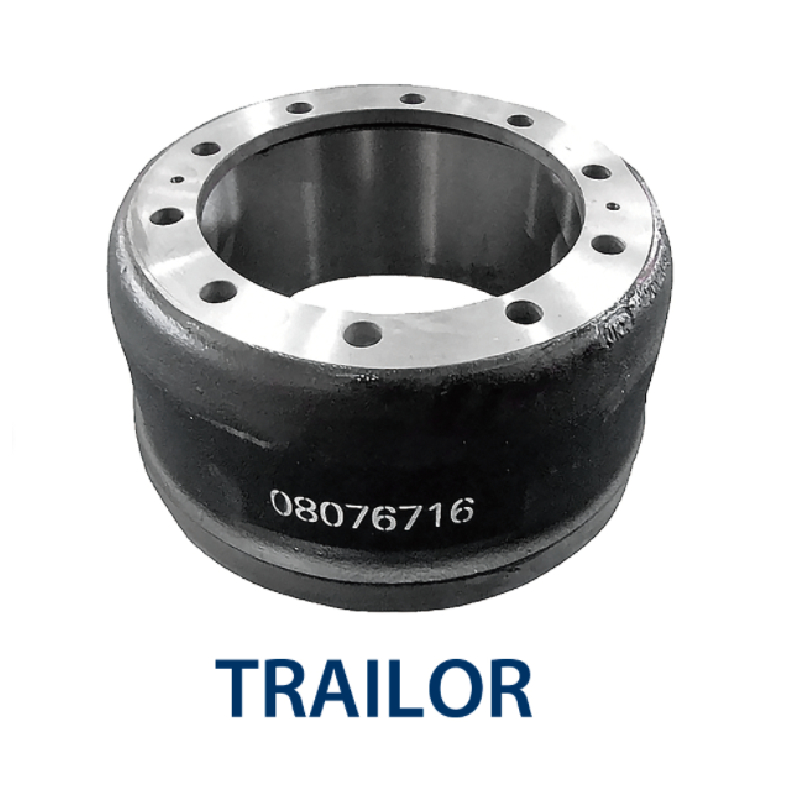nóv . 11, 2024 21:14 Back to list
brake drum machining
Understanding Brake Drum Machining
Brake drum machining is a critical process in the automotive industry, specifically for vehicles that utilize drum brake systems. The function of a brake drum is to provide a friction surface for the brake shoes that press against it when the brakes are applied. This process not only reduces the vehicle's speed but also ensures the safety of the driver and passengers. Over time, brake drums can wear out due to friction, heat, and other factors, necessitating machining to restore their functionality.
The Importance of Brake Drum Machining
Machining brake drums is essential for several reasons. Firstly, it ensures proper fit and function. As brake drums wear down, they can become warped or uneven, which hampers their ability to generate adequate friction. If left unaddressed, this can lead to issues such as brake fade, increased stopping distances, and even complete brake failure. By machining the drums, technicians can restore them to their original specifications, which helps maintain optimal braking performance.
Secondly, machining helps in extending the lifespan of the brake drums. Instead of replacing worn-out drums, which can be costly, machining offers a more economical solution. It allows for the removal of a thin layer of material from the drum surface, thus restoring it to a usable state. This process delays the need for replacement and maximizes the return on investment for vehicle maintenance.
The Machining Process
brake drum machining

The machining process of brake drums typically involves several key steps. Initially, the technician inspects the brake drum for wear, cracks, or imperfections. This assessment is crucial, as any structural damage could render the drum unserviceable. If the drum is deemed salvageable, the technician mounts it on a brake lathe, which is a specialized machine designed for this purpose.
The lathe spins the drum while a cutting tool is applied to the surface. This tool removes material in a controlled manner, leveling the surface and ensuring that it is concentric. The process often involves measuring the drum's thickness, as manufacturers typically provide minimum thickness specifications that must not be exceeded during machining. This precision is vital; exceeding these limits compromises the integrity of the drum and can lead to failure.
After machining, the brake drum undergoes a thorough cleaning to remove any debris or metal shavings. It is also advisable to inspect and replace the brake shoes if they are worn down, as mismatched components can lead to poor braking performance or uneven wear. Finally, the drum is reinstalled, and the entire brake system is tested to ensure it operates safely and efficiently.
Conclusion
In conclusion, brake drum machining is an integral part of vehicle maintenance that plays a significant role in ensuring safe and effective braking performance. By restoring worn brake drums to their original specifications, technicians can enhance safety while promoting cost-effective vehicle maintenance. Regular inspections and timely machining can extend the lifespan of the braking components, ultimately contributing to a safer driving experience. Whether you are a vehicle owner, a mechanic, or simply interested in automotive services, understanding the significance of brake drum machining is crucial for optimal vehicle performance and safety.
-
Durable Brake Drum MAZ for Heavy Duty Trucks | High Performance
NewsAug.26,2025
-
FUWA: Premium Quality, Reliable Performance & Innovative Solutions
NewsAug.25,2025
-
Liza Brake Drum: Superior Quality & Performance for Safe Driving
NewsAug.24,2025
-
Iveco Brake Drum | Premium OE Quality for Daily & Eurocargo
NewsAug.22,2025
-
Your Brake Drum Man: Quality & Performance Parts
NewsAug.21,2025
-
Explore Japan: Ultimate Travel Guide & Authentic Experiences
NewsAug.19,2025
